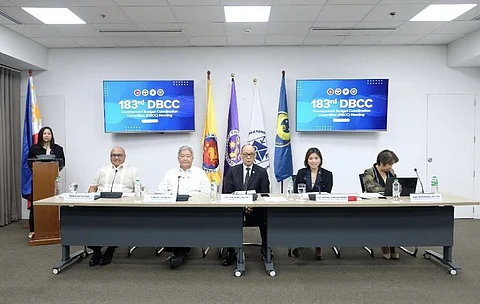
- NEWS
- the EDIT
- COMMENTARY
- BUSINESS
- LIFE
- SHOW
- ACTION
- GLOBAL GOALS
- SNAPS
- DYARYO TIRADA
- MORE

The Cabinet-level Development Budget Coordination Committee made up of economic managers scaled down the government's medium-term macroeconomic targets for next year taking into account the latest domestic and global developments.
DBCC slashed the government's 2023 growth assumption from 6.5 to 8 percent to 6 to 7 percent.
As the economy continues to reopen, domestic demand increased, and services and industry sectors improved.
This enabled the country to register a 7.7 percent gross domestic product growth rate for the first three quarters, surpassing the 6.5 to 7.5 percent target range for 2022.
This momentum, however, is expected to slightly decelerate next year and range from 6.0 to 7.0 percent considering external headwinds such as the slowdown in major advanced economies.
Nevertheless, growth is expected to pick up in 2024 to 2028 at 6.5 to eight percent, as the government pushes for government strategies and interventions provided under the Philippine Development Plan 2023-2028. These include modernizing agriculture and agri-business, revitalizing the industry sector, and reinvigorating the services sector, among others.
Poverty incidence is projected to gradually improve, likely reaching the nine percent target of the administration by 2028.
Economic headwinds persist
The Bangko Sentral ng Pilipinas, meanwhile, said economic headwinds from global developments could result in slower growth next year all through 2024.
Meanwhile, the BSP's latest Monetary Policy Report, said that fourth quarter gains this year indicates that "domestic recovery is likely to remain firm."
The bank's report also mentioned that continuing expansion is being driven by ongoing improvements in the business and services sectors brought on by the further lifting of mobility limitations and the resumption of face-to-face sessions.
According to the BSP, productivity losses from the recent typhoons may limit agricultural output.
"The Financial Stability Coordination Council remains focused on possible systemic risks arising from the challenging global market," the central bank said.
The BSP, Philippine Deposit Insurance Corporation, Securities and Exchange Commission, Department of Finance and the Insurance Commission make up the FSCC.
"(BSP) continues to assess and address the needs of the Filipino public, taking a pre-emptive view in managing financial market risks," it added.
Strong momentum remains
Despite the anticipated difficulties brought on by external forces, the BSP emphasized that the country is still on a "strong economic momentum."
BSP Governor Felipe Medalla underscored that the country's growth is sustainable amid challenges from the global environment.
The inter-agency FSCC, which the BSP heads, is still keeping an eye on and evaluating the effects of "heightened policy rates on the economy," high inflation both domestically and abroad, and global supply constraints.
The FSCC was institutionalized by Malacanang's Executive Order 144, which was signed last year, and given more clout and authority to act when necessary to prevent a financial market collapse.
Also, the peso-dollar exchange rate assumptions for 2023 and 2024 were adjusted upwards as the peso continues to depreciate because of heightened global uncertainties and aggressive monetary policy tightening of the US Federal Reserve, Budget Secretary Pangandaman said.
The local currency is expected to range from $54 to $55 in 2022 and further increase to $55 to $59 in 2023, she said.
